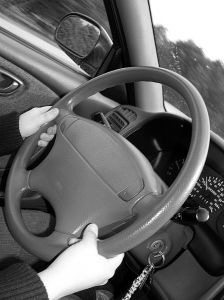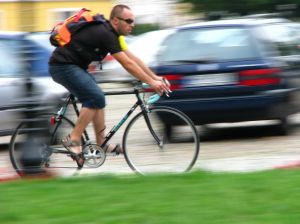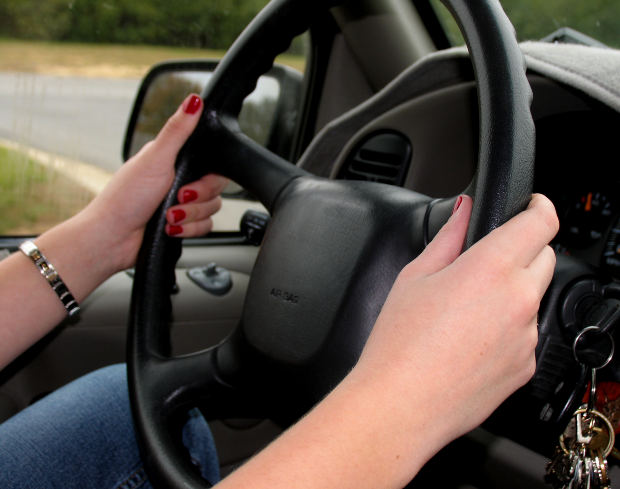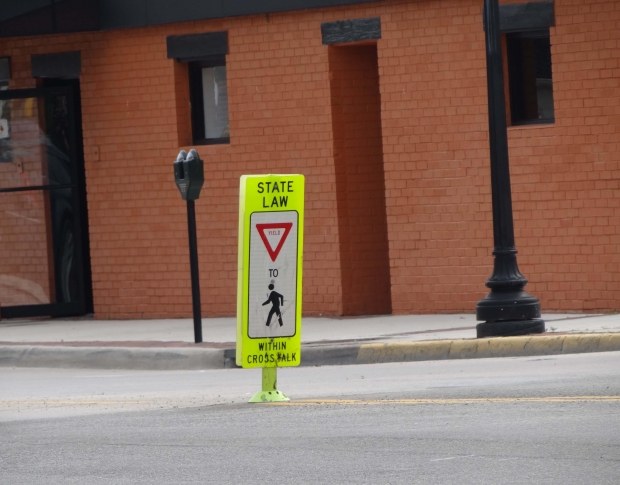Authorities in Middleborough have released new details in their search for the driver who struck and killed a local bicyclist last week.
Michael Dutra, 58, of Middleborough was the victim of the fatal hit-and-run accident, which occurred around 7 p.m. Friday evening. Authorities believe Dutra was either riding or walking his bicycle along Wood Street, where he resided.
Plymouth Country District Attorney Timothy Cruz, as well as Middleborough’s Chief of Police Bruce Gates, said that investigators of the accident had started to piece the scene together, and have collected debris from what they believe to be a light-colored model year 2005-2009 Jeep Grand Cherokee. Authorities think that the vehicle is possibly missing the front marker lens, may have a broken right headlight lens, as well as a damaged right front bumper. Investigators need your help. Anyone with any information regarding the case is encouraged to contact the Middleborough Police Department at (508) 947-1212.
While bike riding is a popular mode of transportation, it is also extremely dangerous, especially for individuals who choose ride at night. Unlike passengers in motor vehicles, bicyclists have no physical protective barriers against outside elements like cars, trees, guardrails, fences, and other large vehicles, and are at the mercy of others traveling on the road.
 The U.S. Centers for Disease Control and Prevention estimates that more than 500,000 people are treated for serious bicycle-related injuries each year, and more than 700 individuals die each year. A majority of these injuries are head injuries attributed to not wearing a helmet. Though many people dismiss the idea of wearing a helmet because of atheistic reasons, or because they feel their short commute does not warrant wearing one, wearing a helmet could make all the difference, and could even save a life. In fact, the National Highway Traffic Safety Administration found that bicycle helmets are 85-88% effective in preventing severe head and brain injuries. Other types of injuries commonly sustained in bicycle accidents include concussions, spinal cord injuries, broken bones, lacerations, paralysis, and death.
The U.S. Centers for Disease Control and Prevention estimates that more than 500,000 people are treated for serious bicycle-related injuries each year, and more than 700 individuals die each year. A majority of these injuries are head injuries attributed to not wearing a helmet. Though many people dismiss the idea of wearing a helmet because of atheistic reasons, or because they feel their short commute does not warrant wearing one, wearing a helmet could make all the difference, and could even save a life. In fact, the National Highway Traffic Safety Administration found that bicycle helmets are 85-88% effective in preventing severe head and brain injuries. Other types of injuries commonly sustained in bicycle accidents include concussions, spinal cord injuries, broken bones, lacerations, paralysis, and death.
Continue reading
 Boston Car Accident Lawyer Blog
Boston Car Accident Lawyer Blog


 Police reports stated that the driver of the truck did not see the cyclist in time to stop, and Pangburn was not able to maneuver around the truck in time to avoid the crash. Prosecutors do not believe that any impairment, cell phone use, or mechanical defects with the vehicle played a role in the accident.
Police reports stated that the driver of the truck did not see the cyclist in time to stop, and Pangburn was not able to maneuver around the truck in time to avoid the crash. Prosecutors do not believe that any impairment, cell phone use, or mechanical defects with the vehicle played a role in the accident. The driver was operating with a junior operator’s license, and had been driving with another 17-year-old in the car; a violation of J.O.L passenger restrictions. According to Massachusetts Law, junior operators may not operate a motor vehicle within the first six months of obtaining his or her license with an individual under the age of 18 years, unless accompanied by a person who is at least 21 years old, has at least one year of driving experience, holds a valid driver’s license from Massachusetts or another state, and is occupying the passenger seat. Violations of this restriction may result in the driver having his or her license suspended for 60-days and paying a $100 license reinstatement fee for the first offense. Subsequent offenses result in a longer suspension period, taking a Driver Attitudinal Retraining Course, as well as a reinstatement fee.
The driver was operating with a junior operator’s license, and had been driving with another 17-year-old in the car; a violation of J.O.L passenger restrictions. According to Massachusetts Law, junior operators may not operate a motor vehicle within the first six months of obtaining his or her license with an individual under the age of 18 years, unless accompanied by a person who is at least 21 years old, has at least one year of driving experience, holds a valid driver’s license from Massachusetts or another state, and is occupying the passenger seat. Violations of this restriction may result in the driver having his or her license suspended for 60-days and paying a $100 license reinstatement fee for the first offense. Subsequent offenses result in a longer suspension period, taking a Driver Attitudinal Retraining Course, as well as a reinstatement fee.  Trucking companies have a lot at stake, as injuries from these types of accidents often tend to be serious or fatal, as, unfortunately was illustrated in the accident last week. Subsequent to any accident, trucking companies may hire a team of investigators in order to mitigate the liability as well as the legal costs associated with the accident. After an accident occurs, it is imperative for the victim and the victim’s family to seek legal counsel with an experienced attorney. Some of the major causes of these types of accidents include driver fatigue, equipment failure, negligent maintenance, overload or improper loading of truck, driver inattention, non-compliance with federal regulations, and speeding. While it is still under investigation, negligent maintenance and equipment failure seem to be the two most prominent factors in what caused last week’s fatal accident.
Trucking companies have a lot at stake, as injuries from these types of accidents often tend to be serious or fatal, as, unfortunately was illustrated in the accident last week. Subsequent to any accident, trucking companies may hire a team of investigators in order to mitigate the liability as well as the legal costs associated with the accident. After an accident occurs, it is imperative for the victim and the victim’s family to seek legal counsel with an experienced attorney. Some of the major causes of these types of accidents include driver fatigue, equipment failure, negligent maintenance, overload or improper loading of truck, driver inattention, non-compliance with federal regulations, and speeding. While it is still under investigation, negligent maintenance and equipment failure seem to be the two most prominent factors in what caused last week’s fatal accident. Pedestrians and bicyclists are extremely vulnerable compared to passengers to a motor vehicle because they do not have any physical barriers to protect themselves if they are hit by a car, truck, or any other vehicle or object on the road. Boston and the surrounding Massachusetts communities, like Waltham, are filled with activity and traffic that pose serious threats to pedestrians’ and bicyclists’ safety. Broken bones, serious cuts and lacerations, bruises, skin burns, spinal cord injuries, brain injuries, and even death are common injuries of
Pedestrians and bicyclists are extremely vulnerable compared to passengers to a motor vehicle because they do not have any physical barriers to protect themselves if they are hit by a car, truck, or any other vehicle or object on the road. Boston and the surrounding Massachusetts communities, like Waltham, are filled with activity and traffic that pose serious threats to pedestrians’ and bicyclists’ safety. Broken bones, serious cuts and lacerations, bruises, skin burns, spinal cord injuries, brain injuries, and even death are common injuries of  The idea may seem farfetched to some, but in fact, a couple from New Jersey used the notion as grounds for a lawsuit they filed against two teenagers. In 2009, the couple Mr. and Mrs. Kubert, were struck head-on while riding a motorcycle by then-18-year-old Kyle Best. Best was behind the wheel of his pickup truck while travelling down a rural highway road, when his friend Shannon Colonna, sent him a text message. Upon opening the message, Best’s truck crossed the center line and hit the Kuberts causing, in what court documents described as, a gruesome accident.
The idea may seem farfetched to some, but in fact, a couple from New Jersey used the notion as grounds for a lawsuit they filed against two teenagers. In 2009, the couple Mr. and Mrs. Kubert, were struck head-on while riding a motorcycle by then-18-year-old Kyle Best. Best was behind the wheel of his pickup truck while travelling down a rural highway road, when his friend Shannon Colonna, sent him a text message. Upon opening the message, Best’s truck crossed the center line and hit the Kuberts causing, in what court documents described as, a gruesome accident. A 19-year-old Manomet woman and her 18-year-old brother were struck head on by another vehicle while they were traveling on State Road shortly after 1 a.m. on Tuesday. The other driver, identified as a 19-year old man from Plymouth, strayed into the other lane and caused the crash near Melix Avenue. Police said that the 19-year-old male had been texting before the accident, and he was cited on charges of driving to endanger, committing a marked-lane violation, and texting while driving.
A 19-year-old Manomet woman and her 18-year-old brother were struck head on by another vehicle while they were traveling on State Road shortly after 1 a.m. on Tuesday. The other driver, identified as a 19-year old man from Plymouth, strayed into the other lane and caused the crash near Melix Avenue. Police said that the 19-year-old male had been texting before the accident, and he was cited on charges of driving to endanger, committing a marked-lane violation, and texting while driving. Sadly, this incident marks the third pedestrian fatality in the city of Worcester, alone, and it serves as a grave reminder to both pedestrians and drivers to be vigilant and safe on the roadways.
Sadly, this incident marks the third pedestrian fatality in the city of Worcester, alone, and it serves as a grave reminder to both pedestrians and drivers to be vigilant and safe on the roadways.






